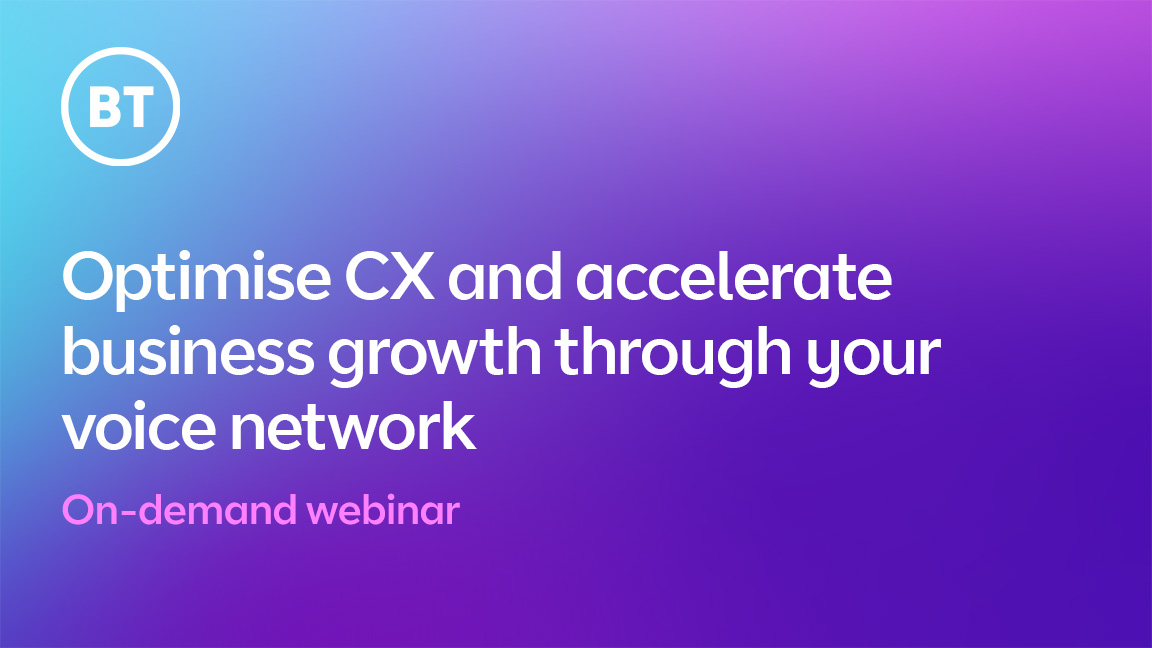What are cloud desktops and how can they benefit my business?
Cloud desktops provide businesses with the flexibility and scalability they need to grow and collaborate


Cloud desktops - also known as virtual desktops, hosted desktops, or Desktop-as-a-Service (DaaS) - virtualise everything that loads when the user powers up a PC. It presents their whole computer, set up how they need it, on their preferred device.
Organisations usually purchase licenses for virtual desktops hosted by a vendor, and employees can log into their virtual desktop from a device of their choosing, making remote working a more viable option.
Although the principles of providing a desktop experience remotely are similar, there are differences between cloud desktops and virtual desktop infrastructure (VDI). VDI is served through on-premise servers, with the infrastructure and deployment managed by internal IT teams. VDI has much higher upfront costs as it requires an investment in the servers and storage needed, as well as ongoing maintenance and upgrade costs.
By contrast, cloud desktops use a third-party provider to host in the cloud, meaning that no on-premise servers or costly infrastructure is needed.
Many cloud desktop providers have add-ons such as Microsoft Office licenses, antivirus and data storage which businesses can add or take away when necessary, and customise to their own needs.
Business benefits of cloud desktops
Like most cloud services, there is little or no on-premises infrastructure that a business has to invest in to get started with cloud desktops, and there's no costly hardware to maintain. The as-a-service model also means that costs are usually on a subscription model, making them predictable and easier to manage.
Employees can be given secure access from anywhere on any device, but because the data and desktop are stored elsewhere, even if they lose their laptop, there's nothing to steal from it, so there's no security breach.
Get the ITPro daily newsletter
Sign up today and you will receive a free copy of our Future Focus 2025 report - the leading guidance on AI, cybersecurity and other IT challenges as per 700+ senior executives
Cloud desktops make remote working much simpler, as setup just involves verification and login, without the need for additional hardware. A setup like this is particularly useful when there are interruptions to travel such as snow days or transport strikes, as workers can carry on as normal from home.
Collaboration and file sharing are another benefit to businesses. Cloud desktops are a step further than cloud file sharing applications, in that the entire interface is stored and delivered through the cloud rather than just files, but it brings the same collaboration benefits that many file-sharing services also deliver.
Having a centralised backup of files and data is another benefit of cloud desktops, making disaster recovery much faster through remote back-up. For business use, it's important to choose a service that is strong on security and collaboration, and is designed for intensive business use.
Cloud desktops can be a challenge if applications are resource-intensive and internet connection is patchy. Many cloud desktops also have an option to run offline and work even if there's no internet connection, but this may not meet the needs of every business.
Flexibility and scalability are two major benefits of cloud desktops, as they allow businesses, whether large or small, to grow at their own pace, adding and taking away licenses as they're required. It's also much more straightforward to roll out updates for software or add new applications, without having to worry about updates and security fixes on individual machines.
However, there are sometimes additional costs involved in cloud desktops, so finding a provider which offers a transparent pricing model is vital to avoid unwanted hidden charges.
Esther is a freelance media analyst, podcaster, and one-third of Media Voices. She has previously worked as a content marketing lead for Dennis Publishing and the Media Briefing. She writes frequently on topics such as subscriptions and tech developments for industry sites such as Digital Content Next and What’s New in Publishing. She is co-founder of the Publisher Podcast Awards and Publisher Podcast Summit; the first conference and awards dedicated to celebrating and elevating publisher podcasts.
-
 Bigger salaries, more burnout: Is the CISO role in crisis?
Bigger salaries, more burnout: Is the CISO role in crisis?In-depth CISOs are more stressed than ever before – but why is this and what can be done?
By Kate O'Flaherty Published
-
 Cheap cyber crime kits can be bought on the dark web for less than $25
Cheap cyber crime kits can be bought on the dark web for less than $25News Research from NordVPN shows phishing kits are now widely available on the dark web and via messaging apps like Telegram, and are often selling for less than $25.
By Emma Woollacott Published
-
 'Digital hide-and-seek': Workers are wasting hundreds of hours a year sourcing the information they need to carry out their role
'Digital hide-and-seek': Workers are wasting hundreds of hours a year sourcing the information they need to carry out their roleNews Knowledge workers globally are wasting a quarter of their working week tracking down information, new research from Atlassian has revealed.
By George Fitzmaurice Published
-
 Optimise CX and accelerate business growth through your voice network
Optimise CX and accelerate business growth through your voice networkwhitepaper Protecting the human experience in a digital world
By ITPro Published
-
 Enterprises are doubling down on IT optimization strategies – and it’s delivering huge financial returns
Enterprises are doubling down on IT optimization strategies – and it’s delivering huge financial returnsNews Organizations that have cracked IT cost optimization and innovation reap the rewards both financially and in terms of time to market.
By Emma Woollacott Published
-
 IDC InfoBrief: Sustainability doesn’t need to be all stick and no carrot
IDC InfoBrief: Sustainability doesn’t need to be all stick and no carrotwhitepaper CIOs are facing two conflicting strategic imperatives
By ITPro Published
-
 Untethered: How CIOs and CISOs are paving the way for the new hybrid workforce
Untethered: How CIOs and CISOs are paving the way for the new hybrid workforceWhitepaper Effective techniques to transition from exposed legacy infrastructure to an effective zero trust strategy
By ITPro Published
-
 Unlocking the power of your digital services
Unlocking the power of your digital servicesSponsored Businesses have invested significant cash into technology since COVID-19, but are they really getting their money's worth?
By ITPro Published
-
 Delivering fast and secure digital experiences for the modern hybrid workforce
Delivering fast and secure digital experiences for the modern hybrid workforceWhitepaper A new approach to digital experience monitoring that can monitor the health of all systems
By ITPro Published
-
 Collaboration is the glue that holds your business together
Collaboration is the glue that holds your business togetherSPONSORED A combination of productivity tools and cloud telephony can enable the best from your workforce
By ITPro Published